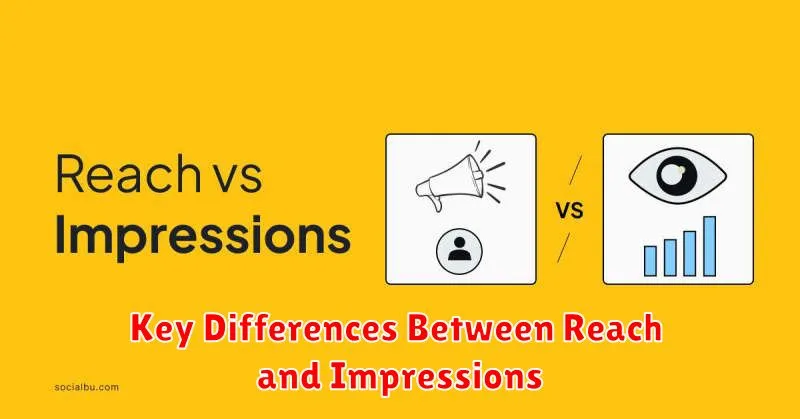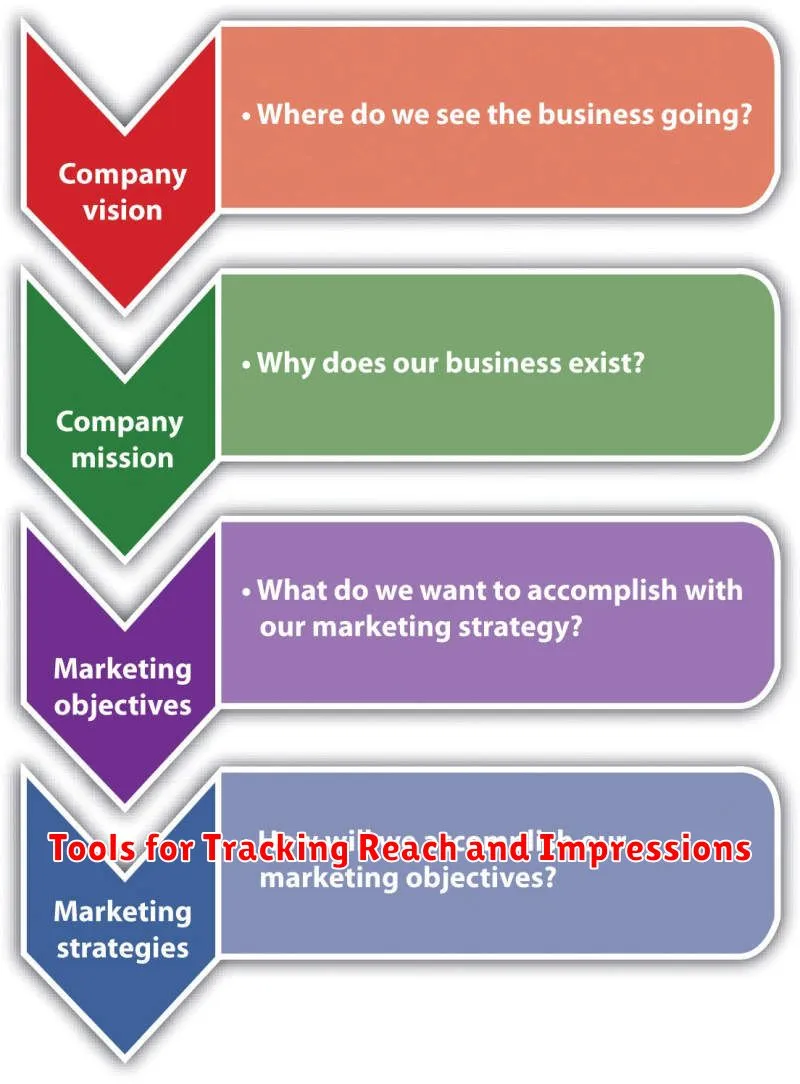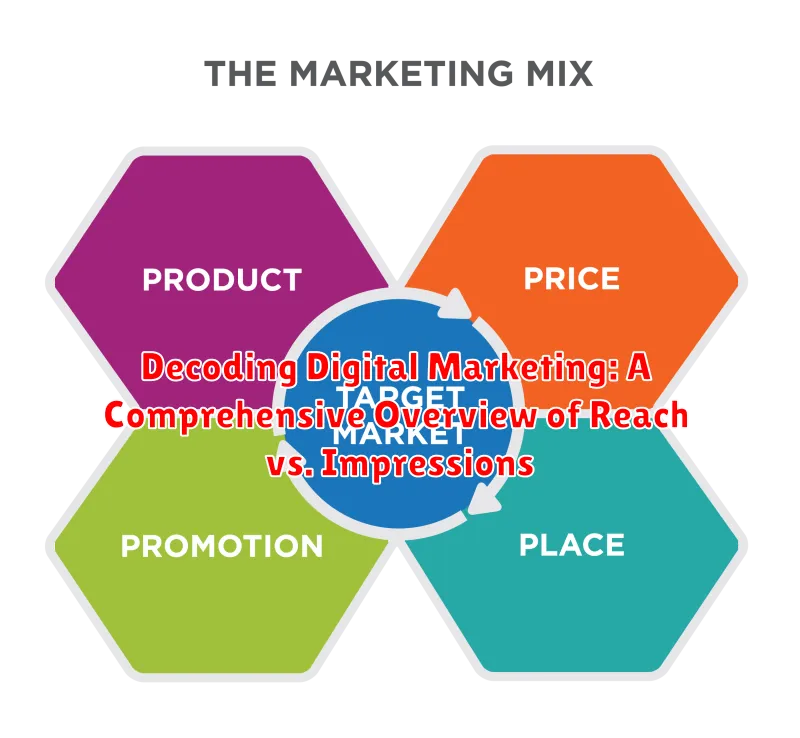In the dynamic landscape of digital marketing, understanding key metrics is paramount for crafting successful campaigns. Two such metrics, often used interchangeably but possessing distinct meanings, are reach and impressions. This article, “Decoding Digital Marketing: A Comprehensive Overview of Reach vs. Impressions,” provides a detailed exploration of these critical concepts, demystifying their differences and highlighting their individual importance in gauging the effectiveness of your marketing strategies. Achieving optimal results requires a clear understanding of what these metrics represent and how they contribute to your overall marketing goals.
The increasing complexity of the digital ecosystem necessitates a more nuanced approach to campaign analysis. Simply tracking aggregate numbers is no longer sufficient. This overview aims to equip marketers and business professionals with the knowledge to differentiate between reach, which represents the unique audience exposed to your content, and impressions, which measure the total number of times your content is displayed. By grasping these fundamental differences, you can make informed decisions about budget allocation, content optimization, and ultimately, the overall return on investment (ROI) of your digital marketing efforts. We will delve into various digital platforms and provide practical examples to illustrate these core principles.
Understanding the Basics: What are Reach and Impressions?
In the realm of digital marketing, understanding the metrics of reach and impressions is fundamental to gauging the effectiveness of your campaigns. While both are crucial for measuring audience engagement, they represent distinct aspects of content visibility.
Reach refers to the total number of unique individuals who have seen your content. If one person sees your post multiple times, they are only counted once for reach. This metric is about audience size.
Impressions, on the other hand, represent the total number of times your content has been displayed, regardless of whether it was clicked or engaged with. This means that if one person sees your post five times, it counts as five impressions. Impressions reflect exposure.
Essentially, reach quantifies the audience size exposed to your content, while impressions quantify the total number of times your content was displayed, including multiple views by the same users.
Reach Explained: How Many Unique Users See Your Content
Reach represents the total number of unique individuals who have been exposed to your content. It focuses on the unduplicated audience size, ensuring each user is counted only once, regardless of how many times they’ve seen the content.
Think of reach as the potential audience your campaign touched. A higher reach indicates that your message is spreading to a wider base of potential customers.
For example, if your Facebook post is seen by 1,000 different people, your reach is 1,000, even if some of those people saw the post multiple times.
Importance of Reach
- Brand Awareness: Expanding the visibility of your brand.
- Audience Growth: Attracting new potential customers.
- Campaign Effectiveness: Measuring the breadth of your campaign’s impact.
Impressions Defined: The Total Number of Times Your Content is Displayed
Impressions represent the total number of times your content is displayed, regardless of whether it was clicked or even seen by a unique user. Think of it as the raw count of how often your ad or post appeared on someone’s screen.
Each time your content loads on a user’s feed, webpage, or other digital platform, it counts as an impression. If the same user sees your ad multiple times, each view is counted separately, increasing the overall impression count.
Here’s a simple breakdown:
- One User, Multiple Views: If a single user sees the same ad three times, it generates three impressions.
- Exposure, Not Engagement: Impressions focus on the potential exposure your content receives, not the actual engagement or action taken by the viewer.
Understanding impressions is crucial for evaluating the overall visibility of your campaign and identifying potential areas for improvement in ad placement and frequency.
Key Differences Between Reach and Impressions

While both reach and impressions are crucial metrics in digital marketing, they represent distinct aspects of audience engagement.
Reach signifies the number of unique individuals who have been exposed to your content. It focuses on the unduplicated audience size.
Impressions, on the other hand, quantify the total number of times your content has been displayed, regardless of whether it was viewed by the same person multiple times.
Here’s a concise breakdown:
- Reach: Unique viewers; focuses on audience size.
- Impressions: Total views; reflects the frequency of content display.
Therefore, a single user can contribute to multiple impressions but only one unit of reach. Understanding this difference is vital for accurately assessing campaign performance.
Why Both Reach and Impressions Matter in Marketing
In the realm of digital marketing, both reach and impressions are critical metrics, though they represent distinct aspects of audience engagement. Understanding their individual significance and combined impact is paramount for effective campaign management.
Reach provides insights into the potential audience size that has been exposed to your content. It quantifies the number of unique individuals who have seen your message, indicating the breadth of your campaign’s visibility.
Conversely, impressions reflect the total number of times your content was displayed, regardless of whether it was seen by a unique user. A high number of impressions, relative to reach, suggests that your content is being shown to the same users multiple times, potentially increasing brand recall and reinforcing your message. High impressions can amplify the reach by increasing the frequency your target audience see the content.
Therefore, by analyzing both metrics, marketers can gain a more comprehensive understanding of their campaign’s effectiveness and optimize their strategies accordingly. Optimizing based on the result of reach and impression analysis will enhance campaign effectiveness.
Calculating Reach and Impressions: Formulas and Examples
Understanding how to calculate reach and impressions is crucial for gauging the effectiveness of your marketing campaigns. While precise figures may require platform-specific analytics tools, these basic formulas offer a solid foundation.
Reach Calculation
Reach is generally expressed as a whole number representing the estimated unique audience size.
Simple Estimation: If you promote a post and 100 people share it, you might estimate your reach to be significantly higher than 100, accounting for their followers.
Impressions Calculation
Impressions are a raw count and can be directly observed from many platform analytics.
Example: If a single banner ad is displayed 500 times on a website, it generates 500 impressions.
Illustrative Scenario
Imagine a social media post. If 1000 unique users see that post (either directly or through shares), the reach is 1000. If those 1000 users see the post an average of 1.5 times each, the total impressions would be 1500.
Strategies to Maximize Reach and Increase Impressions
Optimizing your digital marketing efforts requires a strategic approach to both reach and impressions. While they are distinct metrics, they work synergistically to enhance campaign performance. Here are key strategies to consider:
Enhancing Reach
To broaden your reach, focus on:
- Target Audience Segmentation: Precisely define your target demographic and tailor content accordingly.
- Platform Diversification: Distribute content across multiple channels to tap into different audience segments.
- Strategic Partnerships: Collaborate with influencers or other brands to expand your audience base.
Boosting Impressions
To amplify impressions, concentrate on:
- Content Optimization: Create compelling visuals and engaging copy that encourages repeated views.
- Frequency Capping: Implement frequency caps to prevent ad fatigue while ensuring adequate exposure.
- Strategic Scheduling: Deploy content during peak hours when your target audience is most active.
Tools for Tracking Reach and Impressions

In the realm of digital marketing, accurately tracking reach and impressions is crucial for evaluating campaign effectiveness. Several tools are available to marketers for this purpose, each offering unique features and functionalities.
Platform-Specific Analytics: Most social media platforms, such as Facebook, Instagram, Twitter, and LinkedIn, provide native analytics dashboards. These dashboards offer insights into reach, impressions, engagement, and demographic data specific to each platform.
Web Analytics Tools: Tools like Google Analytics are indispensable for tracking website traffic and user behavior. While not directly measuring impressions in the traditional advertising sense, they provide data on page views, unique visitors (which can inform reach estimates), and user interactions.
Third-Party Social Media Management Platforms: Platforms such as Hootsuite, Buffer, and Sprout Social offer comprehensive social media management capabilities, including scheduling, monitoring, and analytics. They provide unified dashboards to track reach and impressions across multiple social media channels.
Advertising Campaign Management Tools: Google Ads, Facebook Ads Manager, and other advertising platforms offer detailed reporting on reach, impressions, frequency, and cost-per-impression (CPM) for paid advertising campaigns.
Analyzing Reach and Impressions Data for Campaign Optimization
The analysis of reach and impressions data is crucial for optimizing digital marketing campaigns. Understanding these metrics provides insights into campaign performance and informs strategic adjustments.
Key Analytical Considerations:
- Reach Analysis: Assess the demographics and interests of users reached to ensure alignment with the target audience. Identify segments with high reach and low conversion to refine targeting strategies.
- Impressions Analysis: Monitor the frequency of ad exposure to users. High impressions with low reach may indicate frequency fatigue, requiring adjustments to ad creatives or targeting.
Optimization Strategies:
By continuously monitoring and analyzing reach and impressions, marketers can optimize campaigns for better engagement, conversion rates, and ROI. Data-driven decisions lead to more efficient and effective marketing strategies.
Case Studies: Successful Campaigns Leveraging Reach and Impressions
This section examines real-world examples of marketing campaigns that effectively utilized reach and impressions to achieve their objectives. By analyzing these case studies, we can gain practical insights into how different industries and brands leverage these metrics.
Case Study 1: Brand X – Increasing Brand Awareness
Brand X aimed to increase brand awareness among millennials. Their strategy focused on maximizing reach through targeted social media advertising. By carefully selecting platforms and demographics, they achieved a 300% increase in reach within the target audience in just 3 months.
Case Study 2: Company Y – Driving Website Traffic
Company Y, an e-commerce business, prioritized increasing impressions to drive website traffic. They implemented a retargeting campaign, displaying ads to users who had previously visited their website. This resulted in a significant increase in impressions and a 40% rise in click-through rates.
Each case study will highlight the specific strategies employed, the key performance indicators (KPIs) tracked, and the measurable outcomes achieved. Analyzing these examples will allow us to understand the impact of strategic reach and impression management.

